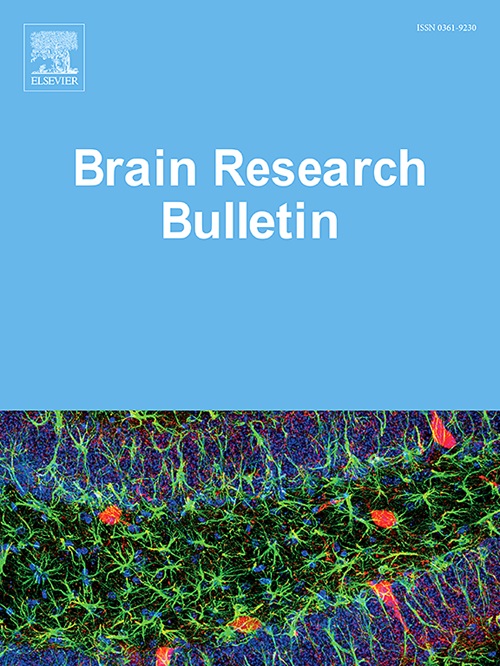人血小板裂解液治疗脑出血后继发性损伤的临床前评价。
IF 3.5
3区 医学
Q2 NEUROSCIENCES
引用次数: 0
摘要
脑出血是一种死亡率和致残率都很高的疾病。脑出血后的继发性损伤过程包括神经炎症、氧化应激和神经元凋亡。人血小板裂解液(Human platelet lysate, HPL)来源于破碎的血小板,富含细胞因子,在多项研究中显示出治疗神经系统疾病的潜力。然而,对脑出血的HPL研究仍然有限。在本研究中,我们制备了HPL用于鼻内给药治疗脑出血。我们测定了HPL中生长因子的浓度,验证了HPL的靶向性,并建立了ICH小鼠模型。我们观察到HPL改善了脑出血小鼠的神经运动缺陷。巴恩斯迷宫训练表明,HPL增强了小鼠的空间记忆和学习能力。此外,HPL还能减轻神经炎症、脑水肿、氧化应激、神经元凋亡和神经轴突损伤。此外,5 % HPL在SH-5YSY细胞培养中显示出强大的功能活性,无细胞毒性。这些发现表明,HPL是一种很有前景的治疗方法,可以减轻脑出血后继发性脑损伤。本文章由计算机程序翻译,如有差异,请以英文原文为准。
Preclinical evaluation on human platelet lysate for the treatment of secondary injury following intracerebral hemorrhage
Intracerebral hemorrhage (ICH) is a condition with high mortality and disability. Secondary injury processes following ICH include neuroinflammation, oxidative stress, and neuronal apoptosis. Human platelet lysate (HPL), derived from crushed platelets, is rich in cytokines and has demonstrated therapeutic potential in neurological disorders in several studies. However, studies on HPL for ICH remain limited. In this study, we prepared HPL for intranasal administration in ICH treatment. We determined the concentration of growth factors in HPL, validated the targeting of HPL, and established a mouse model of ICH. We observed that HPL improved neuromotor deficits in ICH mice. Barnes maze training showed that HPL enhanced spatial memory and learning ability in mice. Furthermore, HPL reduced neuroinflammation, brain edema, oxidative stress, neuronal apoptosis, and neural axonal damage. Additionally, 5 % HPL demonstrated potent functional activity with no cytotoxicity in SH-5YSY cell cultures. These findings indicate that HPL is a promising therapeutic approach for mitigating secondary brain injury following ICH.
求助全文
通过发布文献求助,成功后即可免费获取论文全文。
去求助
来源期刊

Brain Research Bulletin
医学-神经科学
CiteScore
6.90
自引率
2.60%
发文量
253
审稿时长
67 days
期刊介绍:
The Brain Research Bulletin (BRB) aims to publish novel work that advances our knowledge of molecular and cellular mechanisms that underlie neural network properties associated with behavior, cognition and other brain functions during neurodevelopment and in the adult. Although clinical research is out of the Journal''s scope, the BRB also aims to publish translation research that provides insight into biological mechanisms and processes associated with neurodegeneration mechanisms, neurological diseases and neuropsychiatric disorders. The Journal is especially interested in research using novel methodologies, such as optogenetics, multielectrode array recordings and life imaging in wild-type and genetically-modified animal models, with the goal to advance our understanding of how neurons, glia and networks function in vivo.
 求助内容:
求助内容: 应助结果提醒方式:
应助结果提醒方式:


